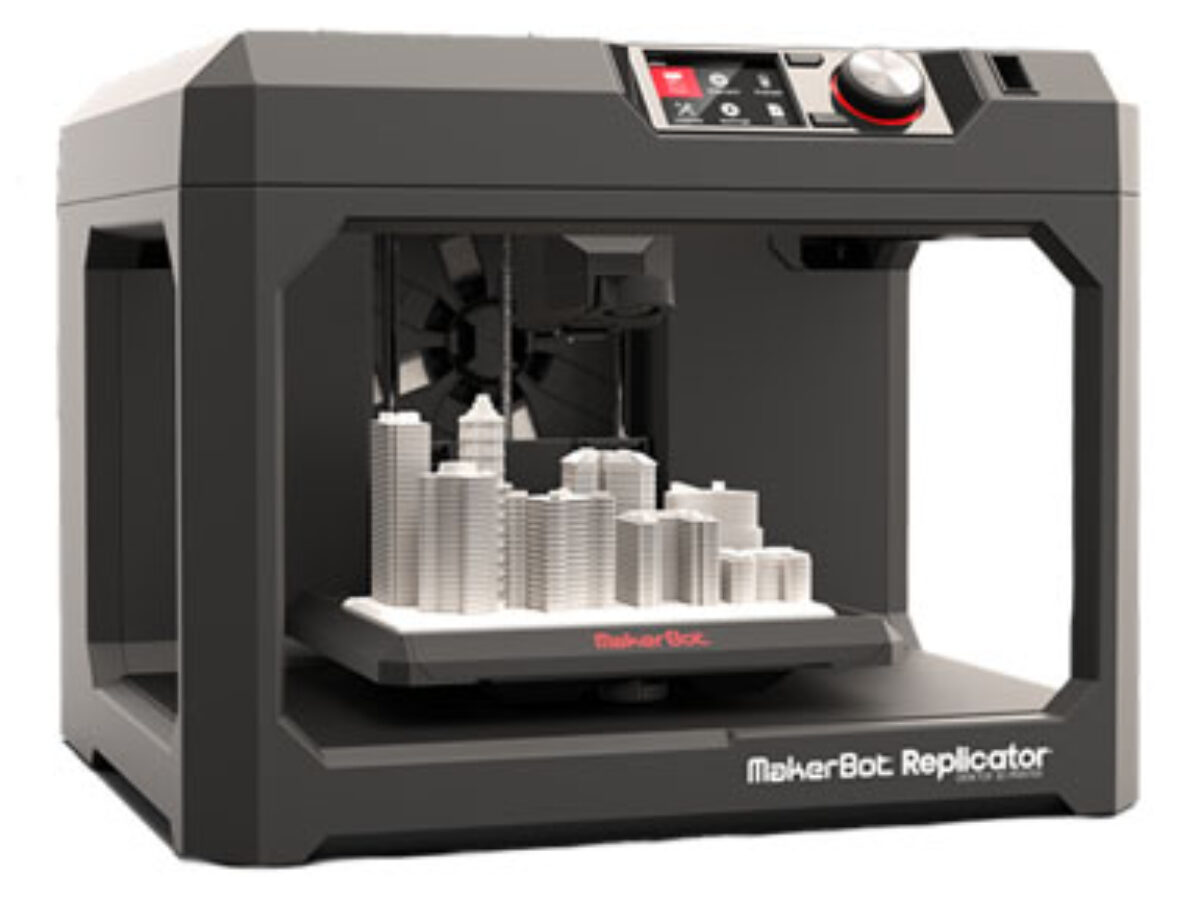Compare H2D vs Replicator Plus
Comparison between the best 3D printers
Choose the best 3D printer at the best price. The cheapest 3D printers are here.
Buy a 3D printer here with 3D Fila.
 |
 |
|
| Model | H2D |
Replicator Plus |
| Printing Material | Filament | Filament |
| Buy Filament for Bambu Lab H2D | Buy Filament forMakerbot Replicator Plus | |
| Estimated price | $1899,00 | $2099,00 |
| Manufacturer | Bambu Lab | Makerbot |
| Release Year | 2025 | 2016 |
| Print Volume [mm] | 350x320x325 | 165x295x195 |
| Printer Size [mm] | 492x514x626 | 410x528x441 |
| Weight [kg] | 42,3 | 18,3 |
| Power Loss Recovery | YES | YES |
| Enclosed printer | YES | NO |
| Bed Leveling | Automatic | Automatic |
| Filament End Sensor | YES | YES |
| Bed type | Heated | |
| Power supply system | Direct Drive | Bowden |
| Standard nozzle | 0,4 | 0,4 |
| Maximum Nozzle Temperature [°C] | 350 | 230 |
| Maximum Bed Temperature [°C] | 120 | |
| Maximum printing speed [mm/s] | 600 | 150 |
| Filament holder | YES | YES |
| Camera for supervision | YES | YES |
| Recommended filaments | PLA, PETG, ABS, ASA, TPU, PVA, Nylon (PA) | PLA |
| Recommended slicers | Bambu Studio | MakerBot Print Software |
| Maximum Resolution [mm] | 0,01 | 0,1 |
| Processor | ||
| Display | Touchscreen 5'' | |
| Power Supply | 110/220V / 240W | |
| Connectivity | Wifi, Bambu bus, Cartão SD | USB / Wi-Fi |
| Operating systems | Windows, Mac, Linux | Windows, Mac, Linux |
| Date of registration in the system | 2025-03-31 | 2022-11-15 |
| Release date | 2025 | 2016 |
| Extra features | Bambu Labs H2D combines high-speed 3D printing with a chamber heated up to 65 °C, dual extrusion with automatic nozzle switching, an AMS for filament drying and exchange, and AI sensors that detect failures. It offers optional laser and digital cutting capabilities, features intelligent calibration through computer vision, vibration control, enhanced fire safety, and real-time camera monitoring. | The Replicator Plus printer is easy to use and has very good print quality. Its software is user-friendly and powerful, with USB, Ethernet, Wi-Fi and support for printing via pen drive. With a safe design for an open frame printer, it is relatively quiet. The Smart Extruder+ detects filament end and pauses printing automatically, in addition to notifying via apps. It has a large print volume, with a non-heated and coated print bed for easy removal of parts. It also has a webcam for remote monitoring of prints. |
| Support for multiple colors and materials (AMS and CFS) | YES | NO |
Notes * |
||
| Cost-benefit | 7 / 10 | 6 / 10 |
| Hardware | 7.2 / 10 | 2.5 / 10 |
| Tela | . | . |
| Print volume | 4 / 10 | 3 / 10 |
| Performance | 5 / 10 | 1 / 10 |
Conclusion |
| In conclusion, when comparing the Bambu Lab H2D and the Makerbot Replicator Plus, the H2D stands out as the more advanced and capable 3D printer. It offers a significantly larger print volume, higher maximum printing speed, and a wider range of compatible filaments, making it suitable for various applications and complex projects. Features such as its enclosed design, automatic filament loading system, and advanced calibration and monitoring capabilities provide an edge in both performance and user experience. On the other hand, while the Replicator Plus is user-friendly and provides good print quality, it is limited by its smaller print volume, lower maximum speed, and fewer material options. Its open-frame design may be less suitable for experimental prints or high-temperature materials. However, it remains a solid choice for beginners or those seeking reliable performance in standard 3D printing tasks. Considering the cost-benefit analysis, the H2D offers better value for those looking for high-end features and versatile printing capabilities, whereas the Replicator Plus might appeal to users with simpler needs who prioritize ease of use and a lower initial investment. Ultimately, the choice between these two models will depend on the user's specific printing requirements and budget. |

